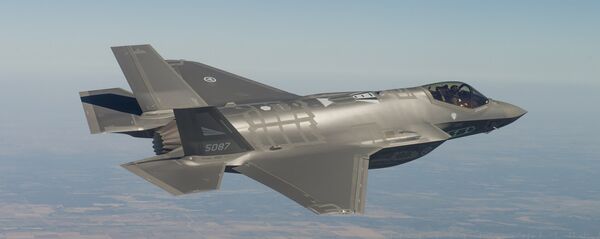F-35 program development is "nearly complete, but deficiencies found in testing need to be resolved," the Government Accountability Office said in a June 5 report. The US Department of Defense "plans to defer resolving some critical deficiencies found in testing until after its full-rate production decision in October 2019, even though DOD's policy states that critical deficiencies generally will be resolved before then," the report said.
"Full-rate production" refers to mass-assembly and usually follows a "low-rate initial production" schedule, according to which Lockheed Martin and the army of subcontractors for the F-35 program manufacture the aircraft to be sent to the Pentagon's Initial Operational Test and Evaluation office.
By making the decision in October 2019 on whether to enter the second phase of production and deployment, "this timing could prompt Congress to make a funding decision before DoD can provide its business case," the GAO report warns.
The watchdog would like to see the Pentagon make its business case before moving forward into full-rate production. "It its rush to cross the finish line, the program has made some decisions that are likely to affect aircraft performance and reliability and maintainability for years to come. Specifically, the program office plans to resolve a number of critical deficiencies after full-rate production."
The Pentagon "concurred" with GAO's recommendation to resolve deficiencies and said that its alternative solutions would mend the aircraft's problems by autumn later this year.
"There is still a risk of further delays if new deficiencies are discovered," the watchdog stressed, even though the testing office has worked to accomodate the program's delayed schedule.




